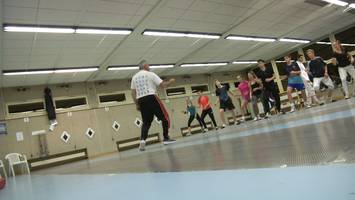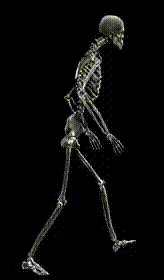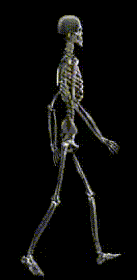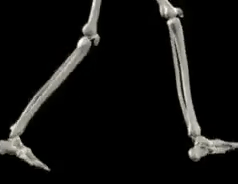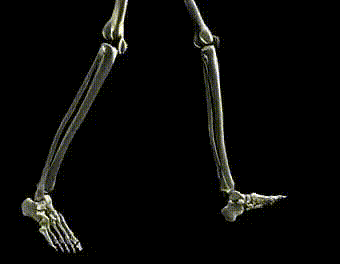Hip prosthesis/total hip prosthesis/hip endoprosthesis/hip joint prosthesis/artificial hip joint
Osteoarthritis of the hip can progress so far that therapy is not able to alleviate the symptoms (e.g. pain) and that a joint replacement is the only solution. Even though this operation is virtually routine today, it is still a major intervention. After a hip operation to implant an artificial joint, careful hip rehabilitation is essential for the prosthesis to last as long as possible. Gait, coordination and strength training, and improving mobility are just some therapy focal points. Avoiding major strain with shear forces that could damage the new joint is of particular importance. Read more under ‘Application tips’.
Definition
An artificial hip joint is an implanted prosthesis (endoprosthesis) to replace the functions of the hip joint after a loss of functionality. Artificial hips are used as surgical therapy mainly in cases of severe degenerative joint disorders (osteoarthritis of the hip) and after hip injuries in order to restore the ability to move without pain. Partial or total hip prostheses are used, depending on the severity of damage. The artificial hip joint is the most common endoprosthesis in Germany.
Causes
Osteoarthritis can be caused by excessive weight and excessive strain, such as occurs during extreme sports or when performing heavy physical labour. Causes also include changes in the cartilage metabolism with advanced age, metabolic disturbances, congenital malformations and acquired joint deformities, for example due to inflammatory joint diseases or after an injury.
Years of improper strain on the hip joint while walking is another possible cause (see Fig. 1 and 2) The greater the impact while walking and the less precise the movement, the faster the cartilage will wear. The main cause of improper strain on the hip joints is the long periods of time we in industrialised western nations spend sitting every day, something that nature did not intend. Sitting for hours leads to the progressive shortening of the hip flexors. As a result, the person is no longer able to achieve a physiologically correct gait with the upper body upright. This in turn leads to excessive strain on the neck and back musculature, incorrect hip and knee position, and therefore to increased cartilage wear.
Long-term consequences – trapped in a vicious circle
Pain caused by osteoarthritis can lead to relieving postures, subsequently causing excessive strain on the joints and other body structures or leading to secondary disorders or secondary osteoarthritis. Furthermore, pain leads to a reduction in exercise and those who move less automatically put on more weight. This in turn has a negative effect on osteoarthritis complaints. Many of those affected by degenerative joint disease are caught in a downward spiral. The main therapy objective is to break free from this downward spiral.
When the hip joint is severely worn, a hip replacement operation is often the last chance to escape the vicious circle of the downward spiral and regain quality of life.
But beware, an artificial hip wears faster than a natural joint in case of improper strain on the body/knee. This makes it especially important to place only gentle loads on the body with a joint replacement, so that it does not get caught in a downward spiral again!
Conventional therapy
After a hip operation to implant an artificial joint, careful treatment to rehabilitate the hip musculature is essential:
- Physiotherapy: Reduction of swelling, coordination and strengthening of the musculature, improved mobility, scar mobilisation and more.
- Reduction in body weight if overweight
- Massage, heat/cold applications
- Pharmacological treatment
The kybun principle of operation – being proactive
The kybun mat and kybun shoe are ideal for bringing more movement to everyday life, and to rehabilitate the hip after an operation – all this without expending any additional time. Acute pain is alleviated quickly and, thanks to the gentle load on the hip joints due to the soft, elastic material, the hip that is still sensitive is protected against impact and the muscle tissue can develop gradually without overloading the ‘freshly’ operated hip.
The soft, elastic foam material acts as a ‘crumple zone’, effectively dampening impact on the joints during running and walking. As a result, the swelling in the recently operated hip is more readily alleviated and healing is promoted (gentle mobilisation of the hip joint, improved circulation, reduced swelling).
Exercise becomes more comfortable again, and hip complaints are reduced after just a few minutes in most cases. Those who like to exercise frequently find it much easier to shed extra pounds, which in turn reduces strain on the joints. Virtually all customers with osteoarthritis or an artificial hip report a reduction in pain since they started wearing the kybun shoe.
It’s not only the cushioning effect that helps alleviate pain. When standing the soft, elastic supporting underlay, one automatically keeps moving very slightly. When standing and walking on soft, elastic materials, the core stability musculature has to make a major contribution in order to stabilise the joints. Strong core stabilising musculature results in a more upright posture, leading to more precise movements in the joints. Lack of exercise due to pain results in long-term muscle loss (amyotrophia). Signs of excessive strain in the hip joint can develop more quickly as a result. The ability to stabilise the joints under load can be improved again through proprioceptive, sensorimotor and coordination training on an unstable surface. This also slows the wear of the operated hip. Training the core stabilising musculature is easy to integrate into everyday life by wearing the kybun shoe.
Attention! Short-term effects are often confused with lasting effects.
The adjustment processes in the body triggered by the kybun shoe can take months or even years. Achieving lasting change is a protracted process.
Despite that, the effect of the soft, elastic material can also be felt quickly, for example in the relaxation of tense muscles and the alleviation of pressure points. These short-term effects must not be confused with the effects in the long run, since the long-term adjustment process cannot progress far enough in a week to be perceptible.
Short-term effects, on the other hand, can disappear again just as quickly as they came, or can even turn into complaints if you do not take the necessary breaks in the beginning.
Therefore, it is important to understand that an initial reaction and a reduction of the positive feeling in the first few weeks with the kybun shoe does not mean that the kybun shoe is no longer working, but merely that the short-term sense of well-being is declining!
Prevention with kybun
Everyone knows that the body exhibits signs of wear over time , and that problems while walking and running are bound to occur sooner or later. Yet most people only start to consciously perceive their body as a fragile and transient structure once they experience problems. In most cases, however, it is already too late because irreversible damage such as cartilage wear has already occurred.
Therefore it is important not to wait until you experience pain before you act. The kybun mat and kybun shoe help protect the joints and prevent osteoarthritis even in youth.
kybun exercises
For information about the special kybun shoe exercises or the basic kybun mat exercises, please click here: kybun exercises
The following adaptations to the standard implementation of interval walking are important with an artificial hip joint :
- Both exercises are important
- Slow exercises help rebuild the stabilising musculature around the hip joint
- Loosening movements help relieve tense hip muscles
Initial reactions
Specific initial reactions after operations to implant artificial hips:
Even though kybun training places intense demands on the operated joint, kybun shoe/kybun mat training can begin just a few days after the operation (unless a doctor or physiotherapist advises against this). If the operation was performed only recently, it is important to slowly increase the development training with the kybun shoe/kybun mat. If the period of use is too long, the swelling may increase or you may even feel more pain. In such cases, it is important to reduce the period of use and to take a short kybun break before the symptoms occur, so the hip can recover from training.
Click here for the general initial reactions experienced by kybun mat and kybun shoe beginners: Initial reactions
Application tips
After having an artificial hip implantation, it is important to avoid exposing the new joint to harmful impact. It is therefore important to observe the following points when walking in the kybun shoe/standing on the kybun mat:
- Walk upright
- Do not make your steps too long
- Everyday/leisure: Walk with the kybun shoe or use the kybun mat as much as possible. Take note of fatigue > perform the kybun exercises regularly and take a short break if needed.
- Job: Sit as little as possible. Alternate sitting and standing in the beginning, and take along replacement shoes to change into
- If you feel unsafe/too unstable in the kybun shoe even after a test walk, we recommend a kybun shoe model with a lower rebound effect. These have a somewhat wider sole in the area of the midfoot, providing added stability. Seek advice from your local kybun shoe expert.
- If you find the kybun shoe model with lower rebound effect too unstable for you as well, we recommend the kybun mat. You can choose the thickness you are comfortable with (the thicker, the less stable, the more intensive the training). You can also hold on to a fixed object. This can be helpful especially in the beginning after the operation, until you regain confidence in the hip.
- Precise movements are essential with artificial hips. Pay attention to exact movements and be sure to take a break in case of fatigue or weakness. Lateral/medial rolling of the ankle joint on the soft, elastic material has to be corrected so that the load is applied to the foot, knee and hip with proper axial alignment. Read more under ‘Lateral/medial rolling of the ankle joint’.
- Contact a kybun dealer you trust if you have further questions, feel insecure or if there is no alleviation of pain when using the kybun shoe even though you are following the tips.
Opinions/customer testimonials
At 66 years old, I have had two hip replacements, a right knee replacement, and have undergone two major back operations. My knees had always been swollen, but once I tried the kybun shoe, they became normal again after two days. Now I can walk for hours without limping. I feel truly alive again.

